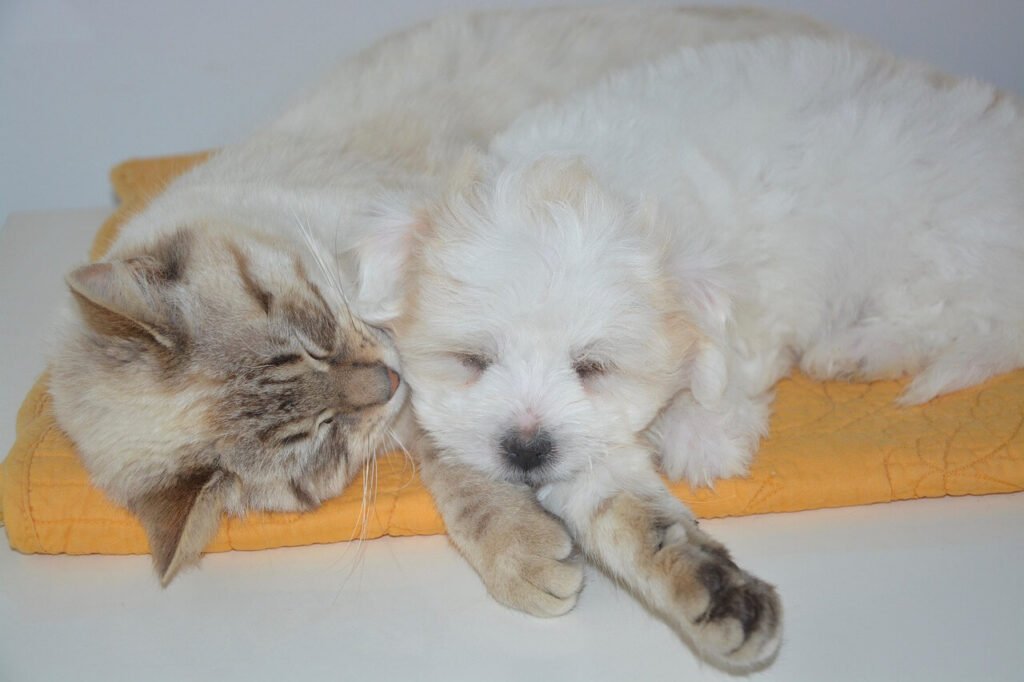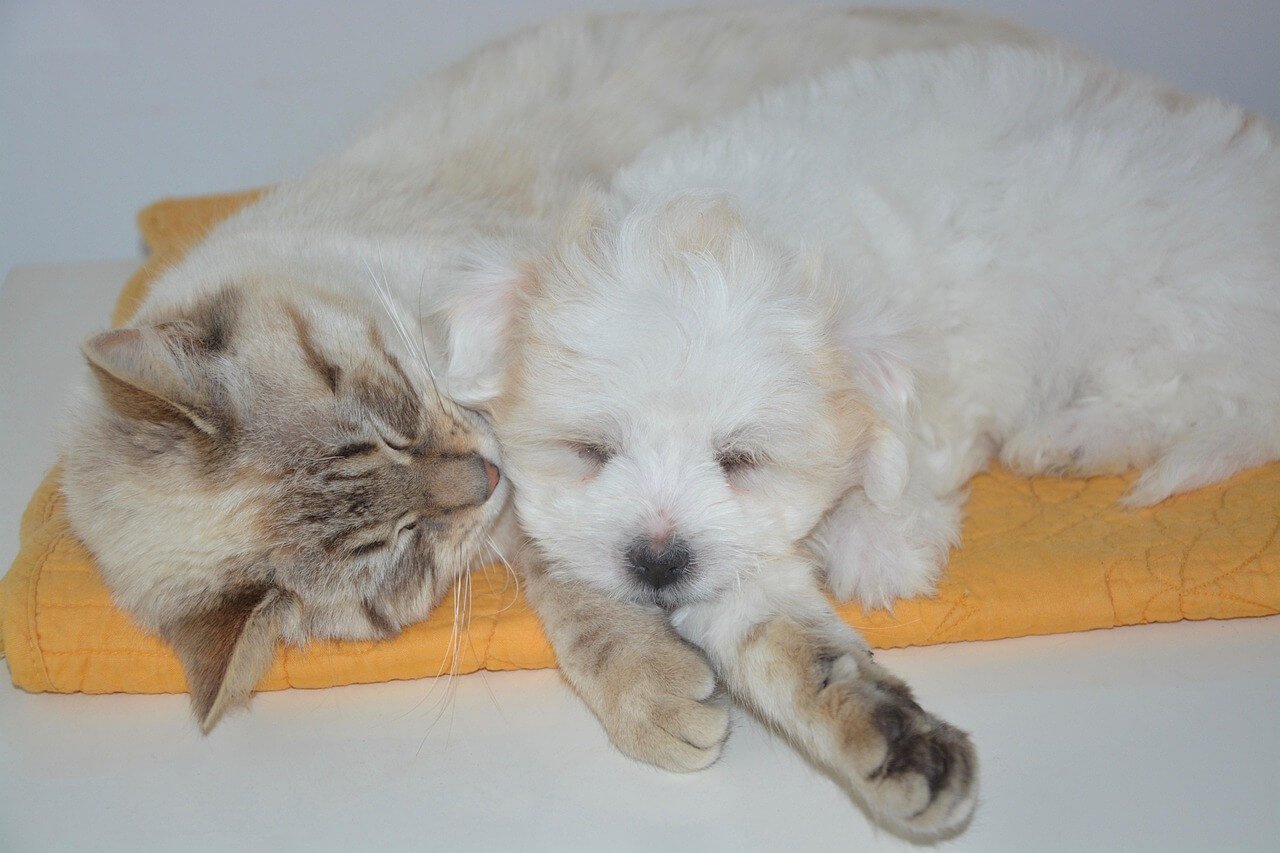How to Stop Your Dog from Chasing the Cat: A Peaceful Solution
Does your dog’s obsession with chasing the cat have you feeling like a referee in a never-ending game of tag? While it’s natural for dogs to chase smaller, fast-moving creatures, this behavior can create stress for both your pets and disrupt the harmony of your home. Whether you’re introducing a new cat to your dog or trying to manage an ongoing rivalry, understanding how to stop your dog from chasing the cat is key to fostering a peaceful coexistence. In this blog post, we’ll explore expert tips, training techniques, and practical strategies to help your furry companions get along. Let’s turn chaos into calm and build a happy household for everyone!
Why Do Dogs Chase Cats? Understanding the Behavior
Before addressing the issue, it’s important to understand why dogs chase cats in the first place. This instinctual behavior often stems from their predatory drive, but other factors can also play a role. Here are some common reasons:
Predatory Instincts
Dogs are naturally wired to chase moving objects, and a cat’s quick movements can trigger this instinct.Playful Energy
Some dogs view chasing as a fun game, especially if they haven’t learned appropriate ways to interact with cats.Lack of Socialization
Dogs who haven’t been exposed to cats during their critical socialization period may see them as unfamiliar or exciting targets.Boredom or Excess Energy
A dog with pent-up energy may redirect their excitement toward chasing the cat as a form of entertainment.Territorial Behavior
In some cases, dogs may chase cats to assert dominance or protect their space.
Understanding these motivations can help you address the root cause of the behavior. By identifying why your dog chases the cat, you can tailor your approach to meet their specific needs.
Step-by-Step Guide to Stopping the Chase
Stopping your dog from chasing the cat requires patience, consistency, and positive reinforcement. Follow these steps to guide your dog toward calmer interactions:
Start with Controlled Introductions
Allow your dog and cat to meet in a controlled environment, such as on opposite sides of a baby gate, to prevent overwhelming either pet.Teach Basic Commands
Reinforce commands like “sit,” “stay,” and “leave it” to give you better control over your dog’s behavior around the cat.Use Leash Training
Keep your dog on a leash during initial interactions to prevent them from lunging or chasing.Reward Calm Behavior
Praise and reward your dog with treats or toys whenever they remain calm and focused in the cat’s presence.Gradually Increase Exposure
Slowly increase the time your dog spends near the cat without chasing, ensuring each interaction ends on a positive note.
With consistent practice, your dog will learn to associate the cat’s presence with calmness and rewards rather than excitement or aggression. Patience is key—this process takes time but yields lasting results.
Check this guide 👉How to Stop Your Dog from Eating Cat Poop: Best 7 Tips!
Check this guide 👉My Dog Ate Cat Food: Best 7 Expert Tips!

Signs Your Dog is Making Progress | Red Flags to Watch For |
|---|---|
Staying calm when the cat enters the room | Growling or barking at the cat |
Ignoring the cat instead of chasing | Fixating intensely on the cat |
Responding to commands around the cat | Lunging or pulling toward the cat |
Showing relaxed body language | Exhibiting stiff or tense posture |
Playing independently without targeting the cat | Attempting to corner or trap the cat |
Training Techniques to Redirect Your Dog’s Focus
Redirecting your dog’s attention away from the cat is a powerful way to break the chasing habit. These training techniques can help refocus their energy on more appropriate activities:
Practice Recall Training
Teach your dog to come when called, even in distracting situations, so you can intervene before a chase begins.Engage in Interactive Play
Use toys like fetch balls or tug ropes to channel your dog’s energy into structured playtime.Introduce Mental Stimulation
Puzzle toys or treat-dispensing games can keep your dog mentally engaged and less focused on the cat.Create a Safe Zone for the Cat
Designate areas of the house where the cat can retreat without the dog’s interference, such as a high perch or closed-off room.Use Positive Reinforcement
Reward your dog generously for ignoring the cat or behaving calmly in their presence.
By consistently applying these techniques, you’ll teach your dog that focusing on you—or simply staying calm—is far more rewarding than chasing the cat. Over time, this will reduce unwanted behaviors and promote harmony.
Preventing Future Chasing Incidents
Once you’ve made progress in stopping the chasing, it’s important to take steps to prevent relapses. Here are some proactive measures to maintain peace between your dog and cat:
Provide Separate Spaces
Ensure both pets have their own areas to relax and recharge, reducing opportunities for conflict.Monitor Interactions Closely
Supervise all interactions until you’re confident your dog no longer feels the urge to chase.Maintain Routine Exercise
Regular walks and playtime will help burn off excess energy, leaving your dog less inclined to chase.Avoid Punishment
Punishing your dog for chasing can increase anxiety and worsen the behavior. Instead, focus on positive reinforcement.Celebrate Small Wins
Acknowledge and reward incremental improvements in your dog’s behavior to keep them motivated.
Taking these preventive steps ensures that your hard work pays off and creates a long-term solution for a harmonious household. Consistency is crucial to maintaining progress.
Signs Your Dog is Learning to Coexist with the Cat
As you work on stopping your dog from chasing the cat, it’s important to recognize signs of progress. These behaviors indicate that your training efforts are paying off and that harmony is within reach.
Reduced Fixation on the Cat
Your dog no longer stares intently or becomes overly excited when the cat moves around.Calm Body Language
Relaxed posture, such as a wagging tail or loose muscles, shows your dog feels at ease near the cat.Willingness to Follow Commands
Your dog listens to cues like “leave it” or “stay” even when the cat is present.Increased Focus on You
Instead of chasing, your dog looks to you for guidance or rewards during interactions.Playful but Gentle Behavior
If play occurs, it’s calm and doesn’t escalate into chasing or roughhousing.
These positive changes demonstrate that your dog is learning to respect the cat’s space. Celebrate these milestones, as they’re a clear sign you’re on the right track!
Common Mistakes to Avoid When Training Your Dog
While training your dog to stop chasing the cat, it’s easy to make mistakes that could hinder progress. Avoiding these pitfalls will help ensure success and maintain a peaceful environment.
Skipping Controlled Introductions
Allowing unsupervised or chaotic meetings can reinforce negative behaviors and create fear or aggression.Overlooking Exercise Needs
A dog with excess energy is more likely to chase out of boredom or excitement.Using Punishment-Based Methods
Scolding or punishing your dog can increase anxiety and worsen their behavior toward the cat.Rushing the Process
Moving too quickly through training steps can overwhelm your dog and lead to setbacks.Ignoring the Cat’s Stress Signals
Failing to notice signs of fear or discomfort in the cat can escalate tension between the pets.
By avoiding these common mistakes, you’ll create a smoother and more effective training process. Patience and consistency are essential for long-term success.
Fun Activities to Keep Your Dog Engaged (and Away from the Cat)
Redirecting your dog’s energy toward engaging activities can reduce their focus on chasing the cat. Here are some fun ideas to keep your dog entertained and mentally stimulated:
Interactive Puzzle Toys
Puzzle feeders or treat-dispensing toys challenge your dog’s mind and keep them busy for hours.Daily Fetch Sessions
Playing fetch in the yard or park helps burn off excess energy and satisfies their need for movement.Obedience Training Games
Practice commands like “sit,” “stay,” or “come” in short, fun sessions to reinforce good behavior.Agility Courses
Set up a DIY agility course with cones, tunnels, or jumps to provide physical and mental exercise.Scent Work Activities
Hide treats around the house or yard and encourage your dog to “hunt” for them using their nose.
These activities not only tire your dog out but also teach them to focus on tasks other than chasing the cat. A happy, engaged dog is less likely to engage in unwanted behaviors.
FAQ
Why does my dog chase the cat?
Dogs chase cats due to predatory instincts, playful energy, or lack of proper socialization.
Can I train my dog to stop chasing the cat?
Yes, with patience and consistent training, most dogs can learn to coexist peacefully with cats.
How long does it take to stop a dog from chasing the cat?
The timeline varies depending on the dog’s personality and the severity of the behavior, but progress can often be seen within weeks.
What should I do if my dog growls at the cat?
Address the behavior immediately by separating the pets and consulting a professional trainer if necessary.
Is it safe to leave my dog and cat alone together?
Only if you’re confident they’ve developed a peaceful relationship. Otherwise, supervise their interactions or separate them when unsupervised.
Building a Harmonious Home for Your Dog and Cat
Stopping your dog from chasing the cat is a journey that requires understanding, patience, and dedication. By addressing the root causes of the behavior and implementing consistent training techniques, you can foster a peaceful relationship between your furry companions. Remember, every small step counts, and celebrating progress along the way will keep you motivated. With time and effort, your home can become a sanctuary where both your dog and cat feel safe, loved, and respected. Together, let’s create a harmonious environment where everyone thrives!
Understanding Scabs in Dogs Ears: Best 7 Tips! Learn how to identify, treat, and prevent scabs in your dog’s ears for optimal ear health.
Is Cinnamon Bad for Dogs? Best 7 Health Tips! Discover safe ways to use cinnamon, risks to avoid, and expert advice to keep your dog healthy.
Can Dogs Get Pneumonia from Humans? Best 7 Tips! Learn how to protect your dog, understand transmission risks, and ensure their respiratory health.
Can Dog Urine Make You Sick? Best 7 Health Tips! Learn how to stay safe, prevent illness, and handle exposure to dog urine effectively.





